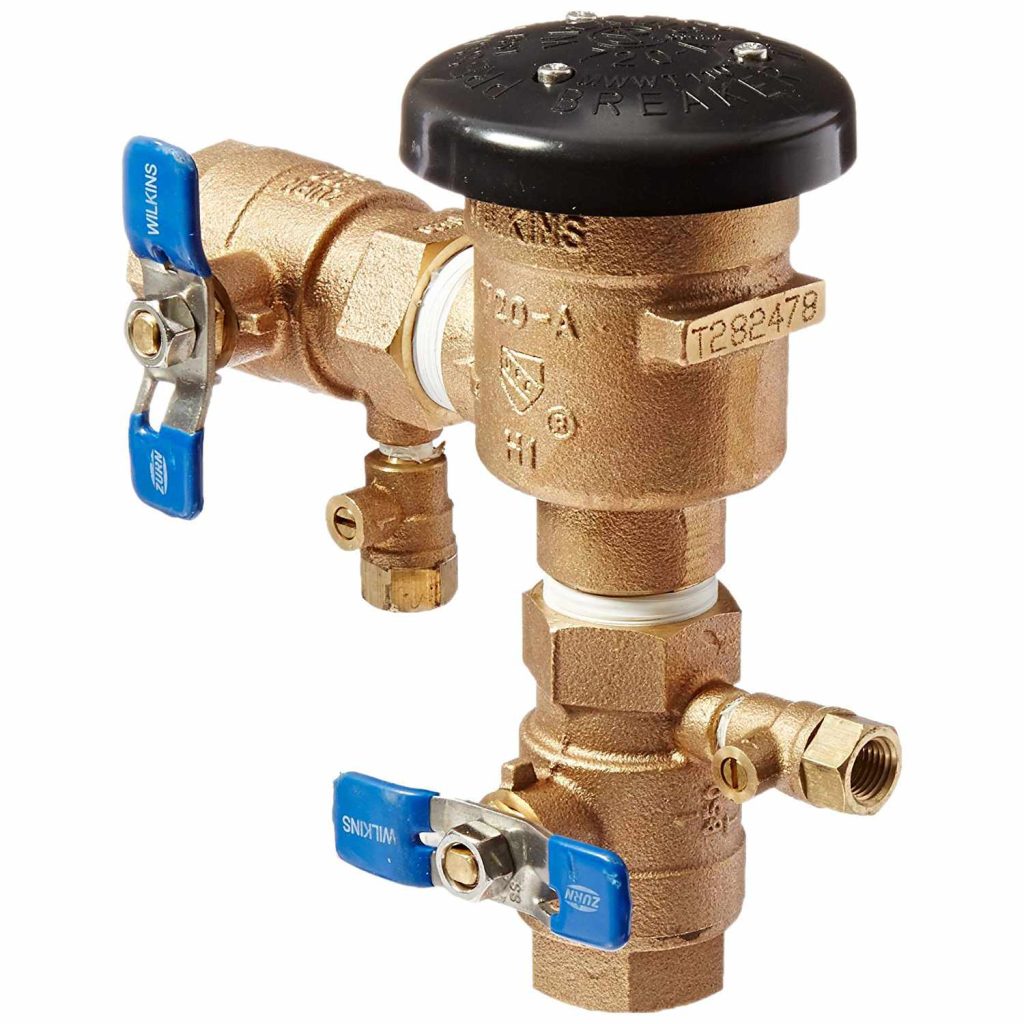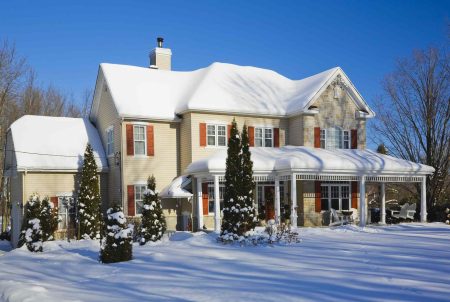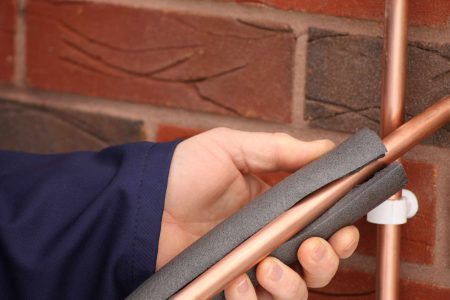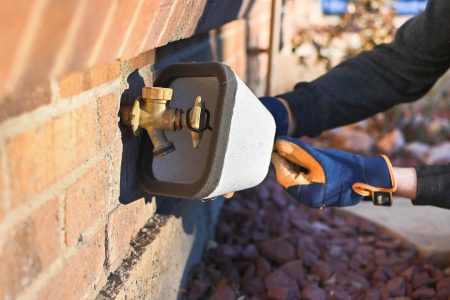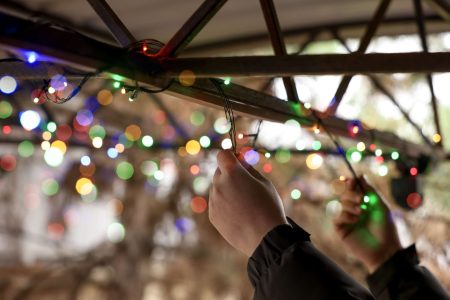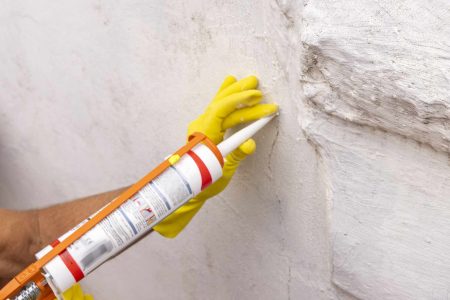A pressure vacuum breaker (PVB) is an essential component of irrigation systems. It provides protection against backflow or back siphoning of water from the irrigation system to your home’s freshwater supply—your drinking water. Most sprinkler systems have a PVB located outdoors either next to an exterior wall or enclosed in a recessed box in the ground. Some systems have PVBs indoors, usually in a basement or crawl space, near the water shutoff for the irrigation system.
Why You Need a Vacuum Breaker
Contamination of the water supply can have wide-ranging effects, so prevention is important. Most local building codes require a backflow prevention device on all water systems. Since there is usually only one water system in the home for drinking water and all household use, including irrigation, there is always the risk of contamination through cross-connections.
Backflow can occur if there is a sudden drop in the water pressure in the home’s main water supply. For example, if the city water is interrupted for any reason, this could result in negative pressure on the home’s main supply. Negative pressure creates a siphoning effect in which the water can flow backward in the pipes. Such an event is rare but could cause water to be sucked out of sprinkler lines and into the main water supply, and from there, it can enter your household fixtures.
How It Works
A pressure vacuum breaker consists of a check device or check valve and an air inlet vented to the atmosphere (open-air). The check valve is designed to allow water through and keep the air inlet closed during normal conditions. When the air pressure is greater than the water pressure, the vented chamber opens and breaks the suction effect of the low pressure, thereby preventing the backflow of water. A pressure vacuum breaker is installed close to the water source before entering the sprinkler valves. You must install it above the highest point in the system, usually the highest sprinkler head or the highest slope in the yard.
Pressure Breaker Vacuum Maintenance
Regular maintenance for a pressure vacuum breaker is minimal. Periodically, check the breaker for leaks. They might leak if sealing tape or plumber’s putty connecting either side of the breakers is worn, incorrectly installed, or missing. Check the connections and replace the seals, if necessary.
The internal components may need replacement every five years or as specified by the manufacturer. Parts like o-ring gaskets that seal against the inner walls of the breaker might become brittle and crack over time. The plastic poppet and bonnet can also wear out. When these components malfunction, it can affect vacuum pressure and cause water to pour out from under the cap.
The most important regular maintenance item is protecting the PVB from freezing during cold weather. Draining the PVB during a sprinkler “blowout” is critical for winterizing a sprinkler system. Failing to drain a PVB can damage its internal parts by cracking or bursting the PVB, requiring replacement. Once the sprinkler system is winterized, the valves on a PVB typically are opened halfway to allow air to escape if residual water inside the PVB freezes. Air will prevent pressure buildup that can damage the parts.
Maintenance Checklist
- Check sealing tape/plumber’s putty at connection points for leaks.
- Inspect o-ring gaskets integrity.
- Drain in winter to prevent blowout; open valves halfway.
Repairs
The internal components of a pressure vacuum breaker can become damaged by freezing and through regular use over time. A clear sign that something is not working properly is leaking from under the bell or bonnet assembly of the valve. Repair kits are available from the manufacturer specific to each PVB model.
A standard repair consists of turning off the inlet and outlet ball valves then removing the bonnet assembly. Since the repair parts are installed in the reverse order, it is good to keep the components well organized as they are removed. The repair parts are then installed, and the water supply is turned on (inlet water supply valve first). The local building code may dictate whether or not a homeowner is allowed to repair the backflow device. If a homeowner is permitted to repair the backflow device, an inspection of some sort is likely required.
Read the full article here



